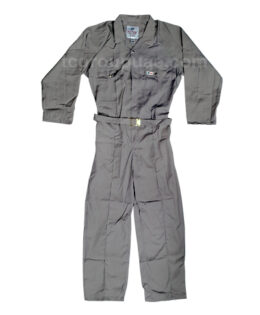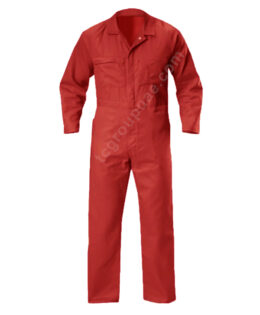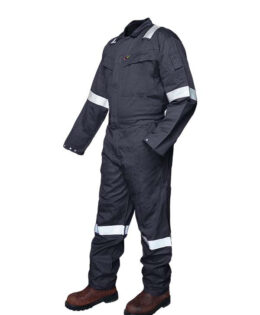Coverall
Coverall
Coverall is a special and typical protective garment design to shield individuals from various risks and impurities. Coveralls are commonly used in a range of industries and environments to provide a wall between the wearer’s body and possible sources of harm. With this, we are trying to explore the uses, significance, and main types of coverall, putting light on their multiple applications.
Uses of Coverall:
Coverall serve as a crucial line of defence for workers in riskier environments. Their main purpose is to protect individuals from exposure to harmful substances, such as chemicals, biological agents, dust, and other particulates. They have wide usage in industries such as healthcare, manufacturing, construction, agriculture, and many more.
Usage of Coverall in Healthcare Industry:
In healthcare area, coveralls play a key role in infection control. Medical professionals use them during actions involving potential exposure to infectious diseases. Also, coveralls help to prevent the spread of contaminants by creating a barrier between the wearer and the patient and reduce the risk of cross contamination or infection.
Coverall in Manufacturing and Construction:
Coverall is a must for workers in manufacturing and construction industries. In these areas’ exposure to chemicals, paints, dust, and debris is common. Similarly the coverall offer protection against skin irritation, chemical splashes, and other workplace hazards, enhancing overall safety for workers. Mainly, it covers almost whole body of an individual with a hoodie with it.
Benefit of Coveralls in Agriculture and Farming:
In agriculture, coveralls shield workers from pesticides, fertilizers, and other possibly harmful elements. These garments are particularly important for those handling chemicals and working with animals, providing protection against direct contact and potential allergy particles.
Main Types of Coveralls:
There are several kinds of coveralls, each of them has different design to cater to specific needs and environments. The primary categories include disposable coveralls, chemical-resistant coveralls, Water proof coveralls, and flame-resistant coveralls.
Disposable Coveralls:
Disposable coveralls are lightweight garments of requirement for one-time usage. They are often made from non-woven materials that offer limited protection against particulates and splashes. These coveralls have main usage in inspection areas where inspectors and staff wear as a cover to their normal attire. Other than this, usages in cleanrooms, laboratories, and environments of contamination control is essential.
Chemical-Resistant Coveralls:
Chemical-resistant coveralls are engineering product rather coveralls to protect wearers from hazardous chemicals and liquids. These are typically from materials like P V C, rubberized fabrics, or specialized barrier films. These coveralls have with sealed seams and closures to prevent any permeation of chemicals, making them vital in industries involving hazardous materials.
Flame-Resistant Coveralls:
These are coveralls for flame or fire related areas to provide protection against flames, sparks, and heat. Their main usage is areas such as welding, grinding, utilities, and firefighting. Manufacturing of these coveralls are from flame-resistant materials that self-extinguish when exposed to flames. This will not keep burning if there is no external source of flame is there and reduce the risk of burns.
Water Proof Coveralls:
Water proof coveralls have main usage in the areas of rainy atmosphere and places of fog and snow. Also, people work near water falls, or dropping water is there at a work place. These coveralls normally will have thick lining to give protection from cold weather as well.
Coverall has another name of Boiler Suit. It has other terms such as overall, jump suit etc. Coveralls are made from cotton, polyester, non-woven materials etc.
Moreover, coveralls are essential garments that play a vital role in keeping people safe. And also, these fabric products give protection to individuals working in hazardous environments. With a various range of applications across industries, coveralls offer a valuable defense against potential harm from chemicals, contaminants, flames, and other workplace hazards. By understanding the various types of coveralls available, companies can make informed decisions to provide the apt protective gear for their workers, promoting a safer and more secure work places.
Showing 1–12 of 17 results












